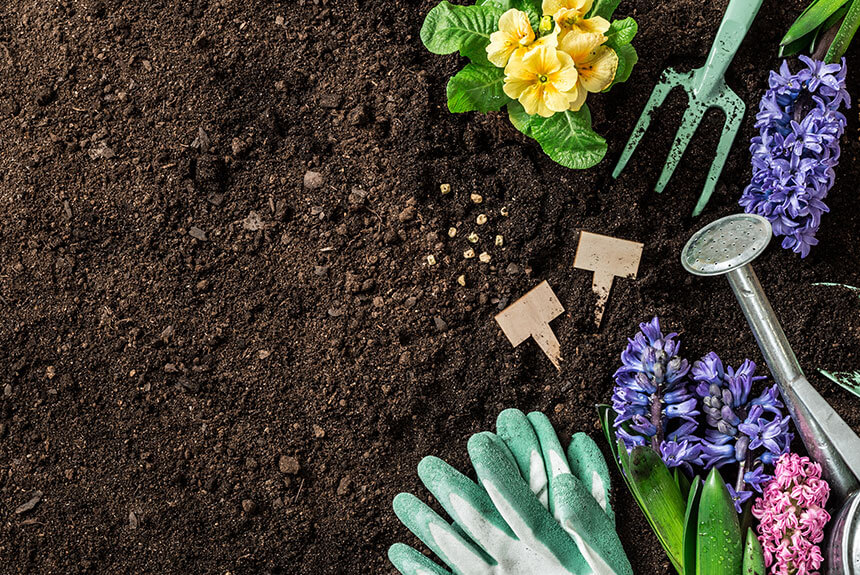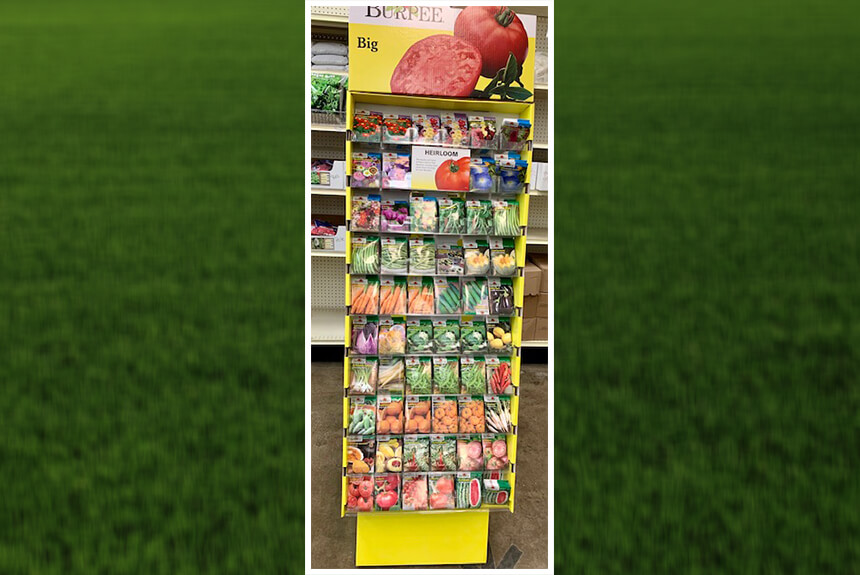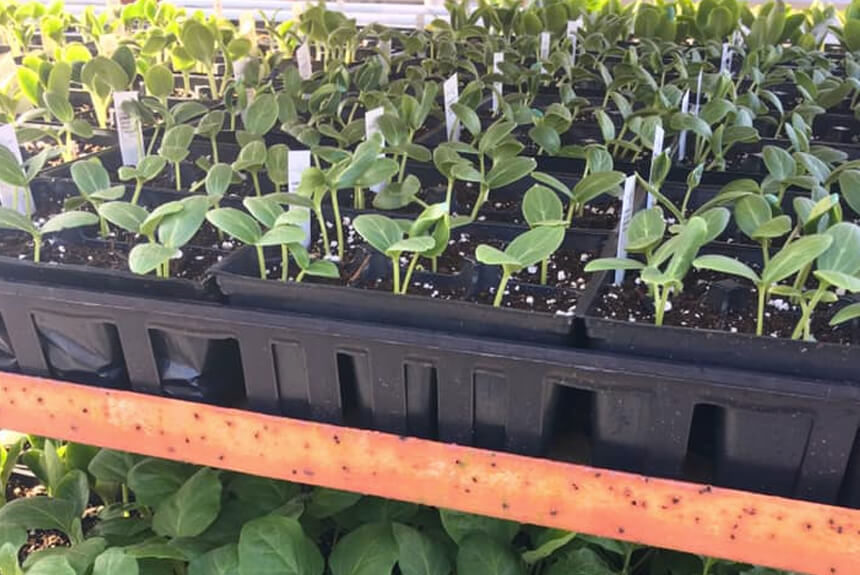Welcome to the most exciting month for all the plant loving, garden growing, flower people out there! May is certainly your time! Every May, the Marshall County Co-op comes alive with greenery, bright beautiful colors and smells of soil and fertilizers! The season we have waited all winter for has arrived!
May is known for many things……most importantly Mother’s Day and Memorial Day. At the Marshall County Co-op, we celebrate both! Every year we celebrate the beginning of garden and flower season with our annual Mother’s Day Flower and more event! This weeklong event draws people from all over to take advantage of our plentiful supply of all kinds of trees, potted and hanging basket flowers, vegetable plants, garden accessories, different types of potting soils, adorable bird feeders, relaxing water fountains, many types of shrubs, flowering trellises and SO MUCH MORE! A fun time is held by all, young and old. This year the event starts May 2nd through Mother’s Day Sunday, May 8th (which is the only Sunday that they are open this Spring).
Why does the Marshall County Co-op stand out from the big box stores?
The Co-op can provide something that they can’t: Knowledge and experience with all things that they have for sale. They can answer your questions on things because they plant and grow the items they sell. Lead by Farmer Jay, they can help you grow and nurture the items you buy from the Co-op.
This brings me to my next subject. Raised Gardening. It is something that this year I am going to try since my back yard is so small, and I share what little space I do have with my dog. I adore fresh vegetables, especially fresh picked tomatoes, eaten with a little sprinkle of salt. There is nothing like that taste. NOTHING.. My problem is though, I have no idea of what to do. The solution? Farmer Jay at the Co-op who can give you the lowdown on how to start your growing season with raised bed gardening. Or you can read what I researched about the subject.

How To Start a Raised Bed Vegetable Garden
Select A Location. This is the first and most important step. You need to select a site for your raised bed which receives at least 6 to 8 hours of sunlight. The more the better. Before selecting the site for your raised bed, you need to keep this in mind.
Since we are living in a colder climate, 6-8 hours or more sunlight is better. Select a site according to your area’s climate. After you have selected a site for your garden, it’s time to clean it. This is a very important step if your site has a lot of grass and weeds in it. Grass and weeds can grow through your raised bed soil and there will be a competition of space, water, sunlight, and nutrients between weeds and your plants. So, first you have to pull all the grass and weeds from your site. Or you can dig the site with a shovel and then clean the soil from all the weeds. If you wanted to go on the next level to save your raised bed from weeds, you can perform soil solarization (a non-chemical process to clean the soil from weeds and pests). If your site is full of pests and weeds, you should perform soil solarization for the sake of your bed.
Next, you may have to spend a little money and buy some lumber to build your bed. You can buy cheap lumber and assemble them using your tools to make your raised bed or you can buy ready-made raised beds from the Marshall County Co-op. A 2 feet by 5 feet or 2 feet by 10 feet raised bed is excellent for a beginner. If you don’t want to spend the money to buy lumber or raised bed, you can build one using bricks or cement block, or you can use old, big tires and old plastic milk crates.
If you have back pain or you’re in a wheelchair, and bending can be a problem for you, you can go with raised beds on legs. You can build a wooden raised bed with legs, or a high waist raised bed. Or you can ask the experts at the Marshall County Co-op what they think.
Now, for the bottom of the raised bed you need to make sure no weeds grow. Put landscape fiber at the bottom of the raised bed or put a lot of newspaper or cardboard. All will help you with the weed problem.
One of the best things about having a raised bed is you can play with the soil and add which soil recipe suits you better. For beginners, it can be hard to choose the best soil recipe. If you end up choosing the best soil mix, you can grow four-time more vegetables in your raised bed. Or you can buy some compost or make your own and mix it up with the potting soil to make a great mix. You can also mix compost with topsoil, which is not as good as potting soil.
For a raised bed with legs, you should only use potting soil. Topsoil is not going to work for you. Plus, plants of these beds need more nutrients, so potting soil can do the trick.

Now comes the big questions? What shall I Grow In my Raised Bed Vegetable Garden?
- Kale. Kale is one of the easiest and healthy vegetables you can grow in a raised bed. Kale is a very strong vegetable to grow, you can grow it in autumn and in mild winter too.
- Swiss Chard. Swiss chard and kale, both are very strong, and both can grow as companion plants in your raised bed. Both vegetables are great for your salad.
- Carrots. Carrots are another easy vegetable to grow as a beginner. Raised bed soil is perfect for growing carrots. For a raised bed with legs, choose a short variety of carrots. You can also grow store-bought carrots. Cut the bottom part of the carrot, put it in a glass of water. In a few days, the leaves will grow. Now plant it in your raised bed soil.
- Tomatoes. Of course, my absolute favorite. Every raised bed owner wanted to grow tomatoes. There are so many varieties you can grow in your bed. Tomatoes require at least 8 hours of sunlight. They need more water and more nutrients for better growth because tomato plants are heavy feeders. It is very important to space your tomato plants in a good manner for a good yield.
- Lettuce. Lettuce is an absolute charm to grow in your raised bed. It is easy to grow, and lettuce plants look beautiful in a raised bed. You can grow lettuce from seeds, seedling or you can grow from store-bought lettuce. The method is the same as carrots.
In closing, here are a few tips for your raised bed vegetables garden.
- Do not crowd your plants in raised beds. Although the soil in raised beds is a good kind, still you need to space them in a good way. You cannot grow more than 5 plants of tomatoes in a 4×4 raised bed. If you crowd the plants, there will be the fight of sunlight, nutrients, moisture, and space between plants, which can cost you a good amount of yield at the end of the growing season.
- Use good and high-quality seeds or healthy seedling at the start of the season. Or all your hard work and patience will be nothing.
- Use trellis or cages to support your plants like tomatoes and cucumbers. (You can find these at the Co-op too.) These plants can get a fungal infection when touches the soil.
- Spend 10 minutes every day in your garden to organize it, like removing weeds from your raised bed. Weeds are a bad dream for your plants.
- I know harvesting is very amusing and you want to harvest all your hard work as soon as possible. But you need to be careful about that, too early or late is not good. When fruits are fully ripened at plants, they are filled with nutrients and juices, that time is best for harvesting.
- Watering your raised bed garden can be tricky. There are a few things you need to keep in mind. Water your plants only when needed. When your raised bed soil feels dry, water the plants. Water deeply and slowly. Water your plants early in the morning or before sunset if you don’t have time early in the morning.
If you are like me, you must be super excited to start your garden! And always remember, when you buy from the Marshall County Co-op, you get the expertise of our experienced gardeners helping you every step of the way. Good Luck!


Leave a Reply